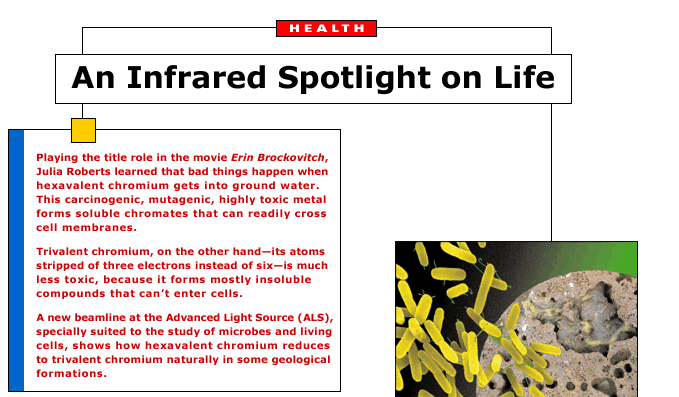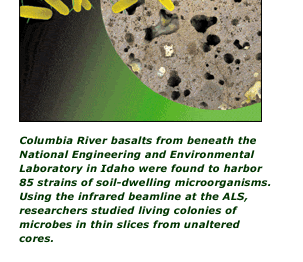 eventy-five meters beneath the surface of the Department of Energy's
Idaho National Engineering and Environmental Laboratory, dense clusters
of microorganisms thrive in the pores and crevices of dry Columbia
River basalts. Radioactive waste has been stored in the area for
more than 40 years, and the place is polluted with radionuclides,
mixtures of hexavalent chromium and other inorganic ions, and volatile
organic solvents.
eventy-five meters beneath the surface of the Department of Energy's
Idaho National Engineering and Environmental Laboratory, dense clusters
of microorganisms thrive in the pores and crevices of dry Columbia
River basalts. Radioactive waste has been stored in the area for
more than 40 years, and the place is polluted with radionuclides,
mixtures of hexavalent chromium and other inorganic ions, and volatile
organic solvents. "When water infiltrates from rain or melting snow, a burst of nutrients reaches the microbes through fissures in the rock, and they bloom like flowers in the desert," says Hoi-Ying Holman, a chemist and engineer with the Earth Sciences Division.


